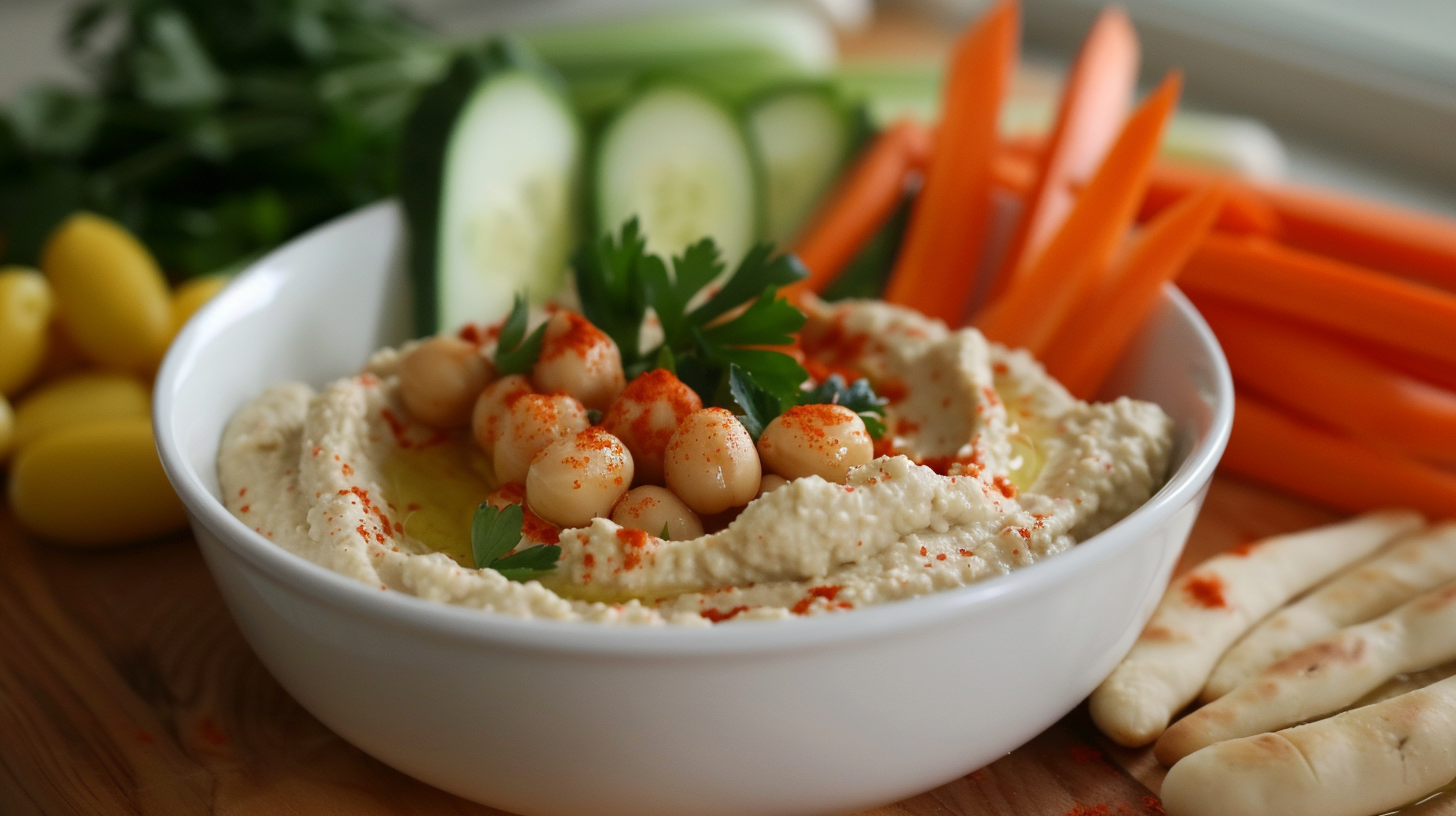
Hummus and veggies are a match made in heaven for anyone looking to enjoy a healthy, nutritious, and incredibly tasty snack or meal. This classic Mediterranean dish is not only easy to prepare but also packed with essential nutrients that promote overall well-being. In this article, we’ll dive deep into the world of hummus and veggies, exploring the benefits, ingredients, and a step-by-step guide to creating your own perfect hummus and veggies recipe at home.
The Benefits of Hummus and Veggies
Nutritional Powerhouse
Hummus, made primarily from chickpeas, is a rich source of protein, fiber, and healthy fats. It also contains vitamins and minerals like iron, magnesium, and B vitamins. Combining hummus with fresh veggies adds a variety of additional nutrients, making this combo a nutritional powerhouse.
Weight Management
Due to its high fiber and protein content, hummus helps you feel full for longer periods, which can aid in weight management. The low-calorie nature of most vegetables makes this dish an excellent choice for those looking to maintain or lose weight.
Heart Health
Chickpeas, the main ingredient in hummus, contain soluble fiber, which can help reduce cholesterol levels. The healthy fats in tahini (sesame seed paste) and olive oil also contribute to improved heart health by promoting better lipid profiles.
Blood Sugar Control
The low glycemic index of hummus, combined with the fiber from vegetables, helps in maintaining steady blood sugar levels. This is particularly beneficial for individuals with diabetes or those trying to prevent blood sugar spikes.
Ingredients for the Perfect Hummus and Veggies Recipe
Hummus
- 1 can of chickpeas (15 oz), drained and rinsed
- 1/4 cup fresh lemon juice (about 1 large lemon)
- 1/4 cup well-stirred tahini
- 1 small garlic clove, minced
- 2 tablespoons extra-virgin olive oil, plus more for serving
- 1/2 teaspoon ground cumin
- Salt to taste
- 2 to 3 tablespoons water
Veggies
- Carrot sticks
- Cucumber slices
- Bell pepper strips (red, yellow, or green)
- Cherry tomatoes
- Celery sticks
- Broccoli florets
- Cauliflower florets
- Radishes
Optional Toppings and Garnishes
- Paprika or sumac for sprinkling
- Chopped fresh parsley
- Extra drizzle of olive oil
Step-by-Step Guide to Making Hummus and Veggies
Step 1: Prepare the Hummus
- Combine Lemon Juice and Tahini: In a food processor, combine the lemon juice and tahini. Process for about 1 minute, scraping the sides and bottom of the bowl as needed. This step helps create a creamy texture.
- Add Garlic, Olive Oil, and Cumin: Add the minced garlic, olive oil, cumin, and a pinch of salt to the whipped tahini and lemon juice. Process for 30 seconds, scrape the sides and bottom, then process for another 30 seconds or until well blended.
- Add Chickpeas: Add half of the chickpeas to the food processor and process for 1 minute. Scrape sides and bottom, then add the remaining chickpeas and process until thick and quite smooth (1 to 2 minutes).
- Adjust Texture: With the food processor running, add 2 to 3 tablespoons of water until you reach the perfect consistency. Taste and season with additional salt if needed.
- Serve or Store: Transfer the hummus to a serving bowl, drizzle with olive oil, and sprinkle with paprika or sumac. Garnish with chopped parsley if desired. Store any leftovers in an airtight container in the refrigerator for up to a week.
Step 2: Prepare the Veggies
- Wash and Dry: Thoroughly wash all the vegetables and pat them dry.
- Cut the Vegetables:
- Carrots: Peel and cut into sticks.
- Cucumber: Slice into rounds or sticks.
- Bell Peppers: Remove seeds and cut into strips.
- Cherry Tomatoes: Leave whole or halve if preferred.
- Celery: Cut into sticks.
- Broccoli and Cauliflower: Cut into bite-sized florets.
- Radishes: Slice thinly or cut into wedges.
- Arrange the Vegetables: Arrange the cut vegetables on a large platter around the bowl of hummus. You can also create individual veggie cups with a dollop of hummus at the bottom for a fun presentation.
Step 3: Enjoy!
Hummus and veggies can be enjoyed as a snack, appetizer, or even a light meal. Pair it with whole-grain pita bread or crackers for added texture and flavor.
Tips for the Perfect Hummus and Veggies
Freshness Matters
Using fresh ingredients is key to the best hummus and veggies. Freshly squeezed lemon juice and good quality tahini make a significant difference in the taste and texture of your hummus.
Customize Your Hummus
Feel free to customize your hummus by adding different flavors. Roasted red peppers, sun-dried tomatoes, or even a handful of fresh herbs like cilantro or basil can add unique twists to the traditional recipe.
Make It Ahead
Both hummus and cut veggies can be prepared ahead of time. This makes hummus and veggies a convenient option for meal prep, ready to grab from the fridge whenever you need a healthy snack.
Conclusion
Hummus and veggies are more than just a snack; they’re a delicious, nutritious, and versatile dish that fits perfectly into any diet. Whether you’re looking to improve your heart health, manage your weight, or simply enjoy a tasty and healthy meal, this hummus and veggies recipe is a fantastic choice. By following the steps outlined above, you can easily prepare this dish at home and enjoy the myriad of health benefits it offers. So, grab your food processor, some fresh vegetables, and get ready to indulge in the delightful combination of hummus and veggies.






Leave a Reply